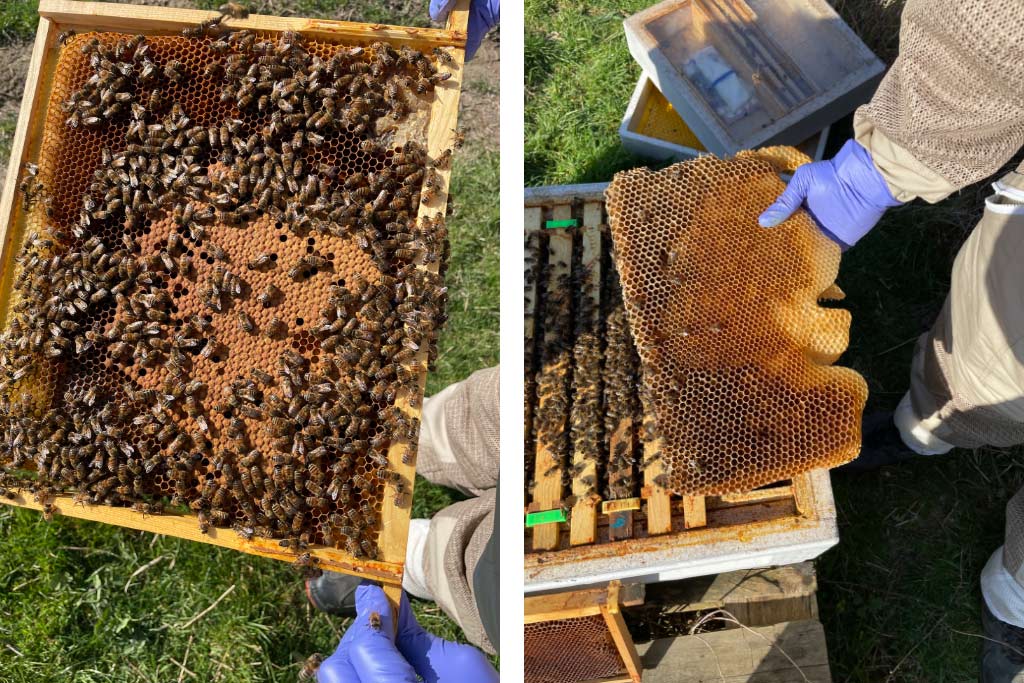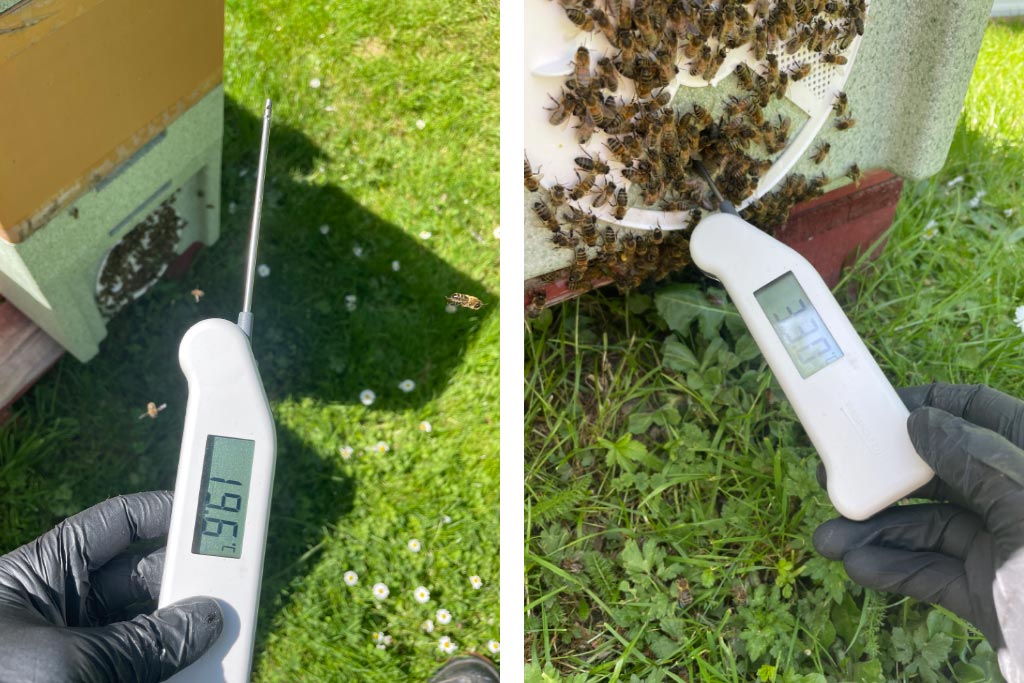Beekeeping & Hive Temperatures with SW Honey Farms

When it comes to beehives, it’s no surprise that bees do an incredible job of maintaining optimum temperature and humidity conditions all by themselves. But there are several temperatures that beekeepers need to keep track of when inspecting their hives, bottling honey and moulding beeswax.
To find out more about keeping bee temperatures in check, we spoke to Stuart Weekes, bee farmer and owner of SW Honey Farms.
Tell us about your beekeeping experience?
I’m a beekeeper from West Sussex and have been doing it now for seven years. I gained a diploma of excellence in bee farming through The Bee Farmers’ Association. Whilst gaining the diploma I worked on around 180-200 colonies. I now have my own beekeeping business supplying bees, honey and hive related products to local areas. Please feel free to contact me about anything bee-related and I’ll be more than happy to help.
What are the critical temperatures for beekeeping?
One of the most crucial temperatures to learn as a beekeeper is the inspection temperatures. You shouldn’t do any inspections unless the air temperature is 13 °C or higher. The Thermapen Air Thermometer is a great piece of kit which shows the actual air temperature in the apiary. The hive is another key temperature, this needs to be maintained at 33 °C, give or take a degree. The warming temperature to decrystallize honey should be done at no more than 40 °C. The melting temperature of beeswax is 70 °C.
How do bees regulate hive temperature?
Bees cluster in the winter to keep the queen and brood warm. They do this by consuming stored honey and using it as energy to move against one another and cause friction heat.
In the summertime, to cool the hive down, they will sit at the entrance of the hive and fan their wings to create their own type of air conditioning. This expels hot air and creates a flow of fresh air.

Is there an optimum humidity level for the hive?
In healthy colonies, the humidity of the hive is around 40-60%. They collect water to maintain this humidity.
What are the critical temperatures for bottling honey?
When bottling honey, the optimum temperature is around 35 °C; this allows the consistency to be less thick and flow through the pipes into the jars more easily.
Which thermometers do you use for beekeeping and making honey?
Thermometers are used quite regularly in beekeeping. I use the Thermapen Air Thermometer to take the air temperature before inspections. I also have a max/min thermometer with a food penetration probe in my honey warmer. The constant max/min reading allows me to see if the temperature has spiked at any point during the decrystallization of the buckets. If it has, then it cannot be sold (this has never happened thankfully).
How does temperature influence the honey quality?
Too high of a temperature can cause the honey to become bitter and quite awful to consume. This is why there are temperatures that are followed by every beekeeper to make sure their honey is of high quality. Quality honey is supposed to crystallise; it’s a sign that the honey hasn’t overheated and cold extracted. If someone has a jar of honey that has crystallised then all they would need to do is pop it on a radiator for a day or two or in a bowl of warm water to loosen it again.

What are the critical temperatures for producing beeswax?
Beeswax is melted at 70 °C. Once it has melted it can be poured into moulds to create candles or into blocks to sell or exchange for beeswax foundation to go back into the hive.
What more can we do at home to attract bees into our gardens?
We can do many things. Simply planting bee-friendly flowers and creating or buying a bug hotel will bring more pollinators into their gardens.
Visit the SW Honey Farms website to shop Stuart’s honey and beeswax or to adopt a hive.
You might also like:
Baking Pies with Piglet’s Pantry
Tyre Temperatures: The Key to Motorsport Success
Coffee Temperatures: Beans to Brew with Kendricks
It’s incredible to learn about the different techniques and tools used to monitor hive temperature and ensure the bees’ well-being. As someone who enjoys honey, it’s important to understand and appreciate the hard work and dedication that goes into producing this delicious and nutritious food.
Thank you for your comment, we’re delighted to hear you found this piece interesting.